A farm has never ending projects most of which we were fairly clueless of their execution prior to our research. However, it has been a wonderful opportunity for us to get our hands dirty, well actually our whole bodies dirty, and learn something new! It’s a bonus when we can do these things as a family.
Fence:
So, prior to getting our sweet piggies we had to create a fence to complete the one side of the hayfield they would be living in. Justin did his research, which he is so good at, came up with an action plan and bought the supplies. In the project we would be digging 8 fence posts, tensioning wire fencing, bracing the poles and putting in 2 gates. I contacted all our neighbors asking if anyone had a pole digging tool we could borrow figuring that at least one would have it. Well, don’t ever underestimate the handy country folk. ALL of our neighbors had one! Ha! Very smart to have such a handy tool.
As many of you know Oregon gets LOTS of rain over the winter therefore, as you can guess, we worked many days in the rain while making this fence. Messy, messy, messy!! Just 4-6″ down from the surface our soil becomes clay. Clay is not only difficult to dig through but extremely sticky and oh so very messy. Due to the soaked earth our holes quickly became muddy wells which would splash and slosh as we jammed our digging tool in. By the time we had finished our first fence pole we all looked like Dalmatians! It was hard slow work.
When putting up the fencing we soon fell into a rhythm of tensioning and stapling. We found a great technique that allowed us to keep the tension while we pounded in our staples. This was after we tried a couple different methods that ended in failure. You live, you learn, right? We chose to make the gates big enough that our tractor or a large truck could fit through if needed to access the septic or hayfield.
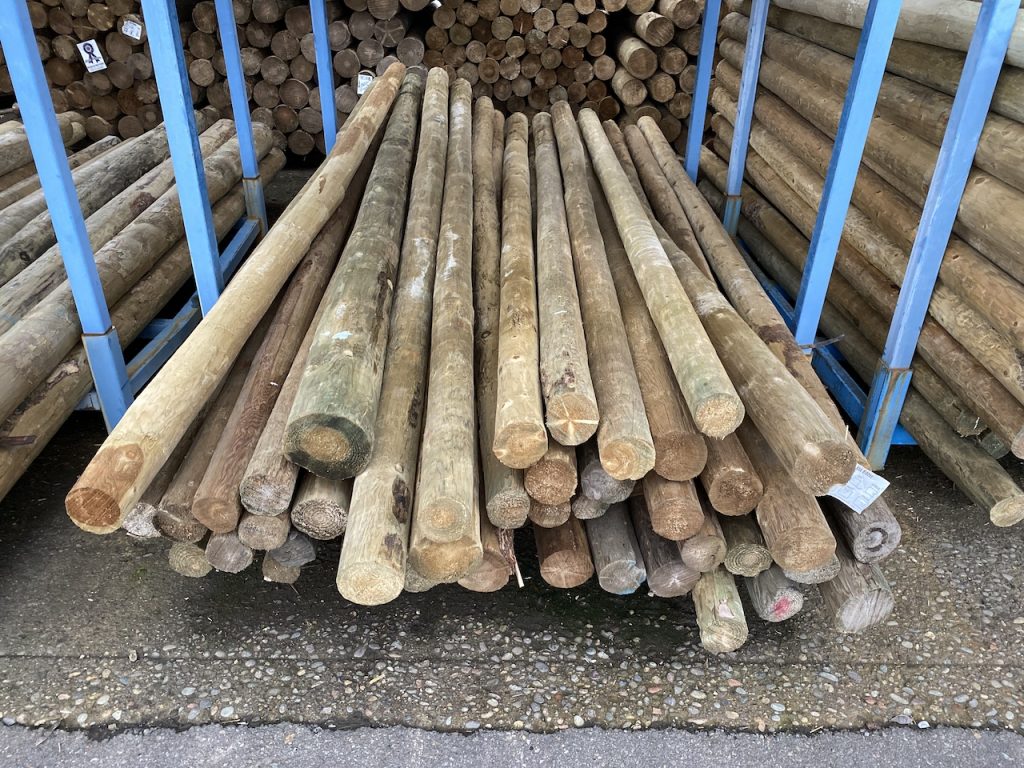
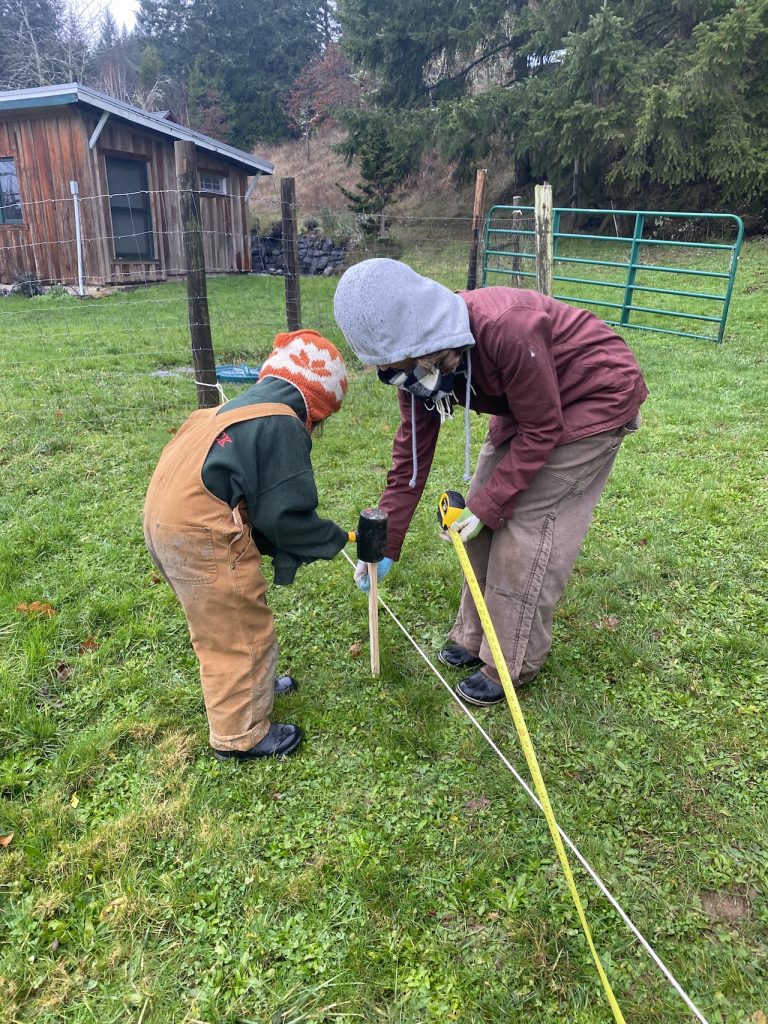


Sweet little helpers 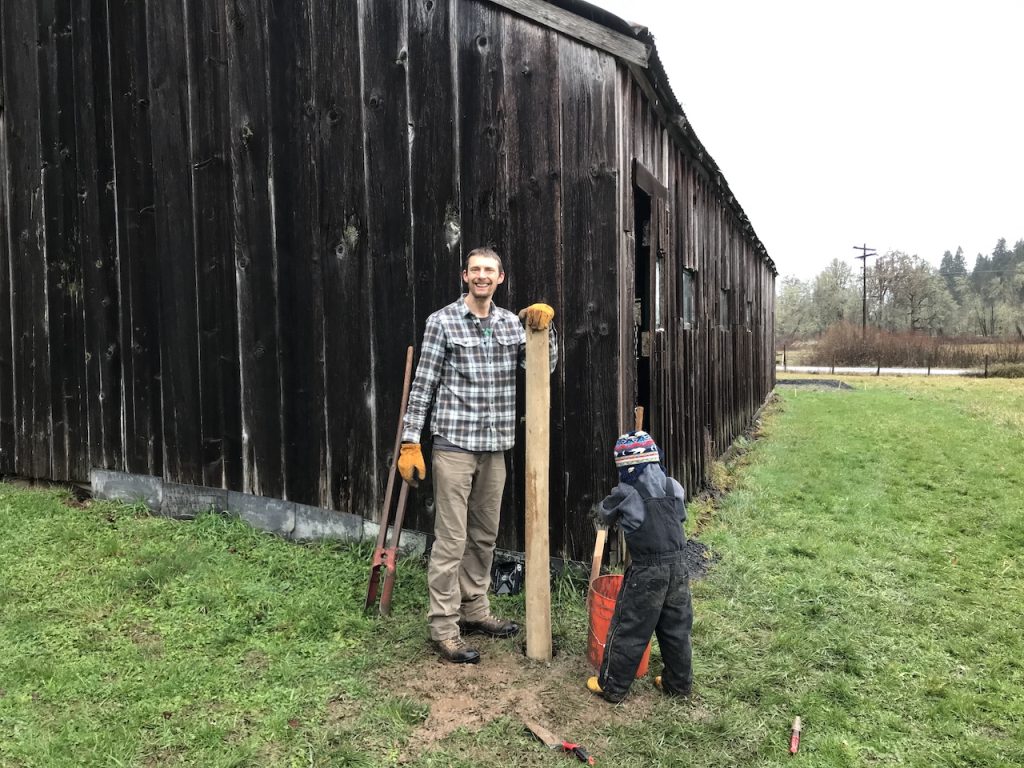


What we thought was muddy…wait until next fence! 



Scraping the clay off tools 
Wet feet!
Pig Pen:
We weren’t exactly sure how large we ultimately wanted the piggies sleeping area to be inside the barn. We came up with multiple designs but all involved some major work. While we were figuring things out with the pigs we decided to create a semi-temporary structure that could be easily altered if it needed to be.
Before we could start any of these plans we had to pull up an existing wood platform that was in that area of the barn. In doing so we found that there had been multiple animals living under there at different times. I found the skeleton of an opossum and I’m pretty sure semi-recent cat poo. This makes sense because we have a volunteer barn cat who’s named Clover and roams our place. Don’t worry, she has a couple other shelter spots here on Crow Farm.
Justin built a pen with pallets which leads out the door of the barn to their outdoor pen. It worked out great and seems to be a good size! I’d say my only wish would be that a gate be added in the future. Right now we climb up and over the pallet wall to tend to the piggies. Eventually I’d like this pallet wall to be higher to make it predator-proof. When we do this we will definitely need a gate! When friends came over with their dog, the dog showed us how easy it was to hop over their pallet pen and chase them down! It was scary and gave us good information about how easy it was to get in.
Digging Ditches:
Part of Justin’s internet plan for Crow Farm involved hooking the main buildings up to ethernet (wired internet). This means digging ditches to all those buildings! Luckily we had bought the correct digging tools for the first ditch we dug so the following ditches were easier.
Justin took the lead on this project. First he strung a string and marked the path with a shovel cut. The sod was cut out and set aside and the hole was dug with a pick ax and skinny shovel. Super handy! One of the ditches went from the granny shack to the carport and another from the annex to the barn. Why do we need fast internet at an open air pole barn you may be asking yourself? Well, we wanted to be sure our guests with campers had internet and we could spy on our animals with security cameras. :). Good to know that they are safe and behaving themselves.
Camper Pad:
Because we traveled on the road for 6 month chunks 2 years in a row we were lucky enough to meet some really great folks who are on the road with their families full time. When we were looking at homes to buy we wanted to be sure we had a place for campers to park and be comfortable while they visit.
Crow Farm definitely had the potential for this but it wasn’t quite practical for the big rigs to have space to get in and out with ease. There were two “driveways” at different levels leading to two of the three bays of the barn. This was super handy for moving vehicles in and out of the barn but tricky for a camper to have room to park on the narrow path. It also dropped off quite abruptly to the edge of the north hayfield leaving no room for a big rig to turn around. In an effort to make our place more inviting for our on-the-road friends we decided to widen and level this pad.
This was no small task! The first truck FULL of gravel we got was 15 tons, which sounded like a lot! Well, we learned that it’s not a lot. Not at all. It was kind of like seeing a little ant hill on a beach. Haha. We laughed so hard at us being so naive. Justin calculated out how many tons he estimated us needing and, yikes! It was a lot!! So far we have had 250 tons of fill dirt (which is non-clay dirt mixed with rocks of various sizes; some the size of Butternut!). Justin scooped the dirt piles with the tractor and after he dumped them I spread them out evenly. He then attached a grading tool to the back of the tractor and as I shouted commands (the tractor is loud) we slowly leveled the camping pad. We learned that this is not such an easy task. We have spent many afternoons looking at the pad from different angles and adding or removing dirt here and there. It was a bit trickier because we were not only grading it away from the barn in one direction but also angling it away from the hayfield in another direction. It felt like we were little tiny ants moving the dirt around. Progress was slow to be seen when moving such heavy materials. The last step will be to add a final layer of gravel to the top after the dirt has experienced some more rain and had time to settle. Lucky for us, it rains a lot here!
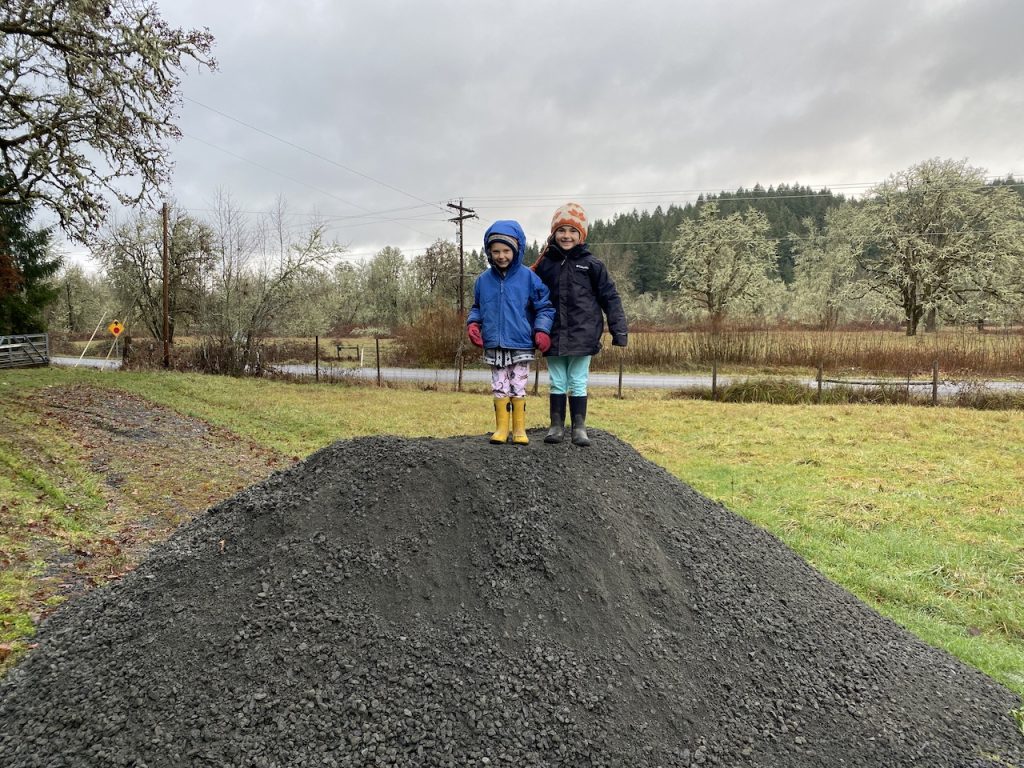
First 15 tons 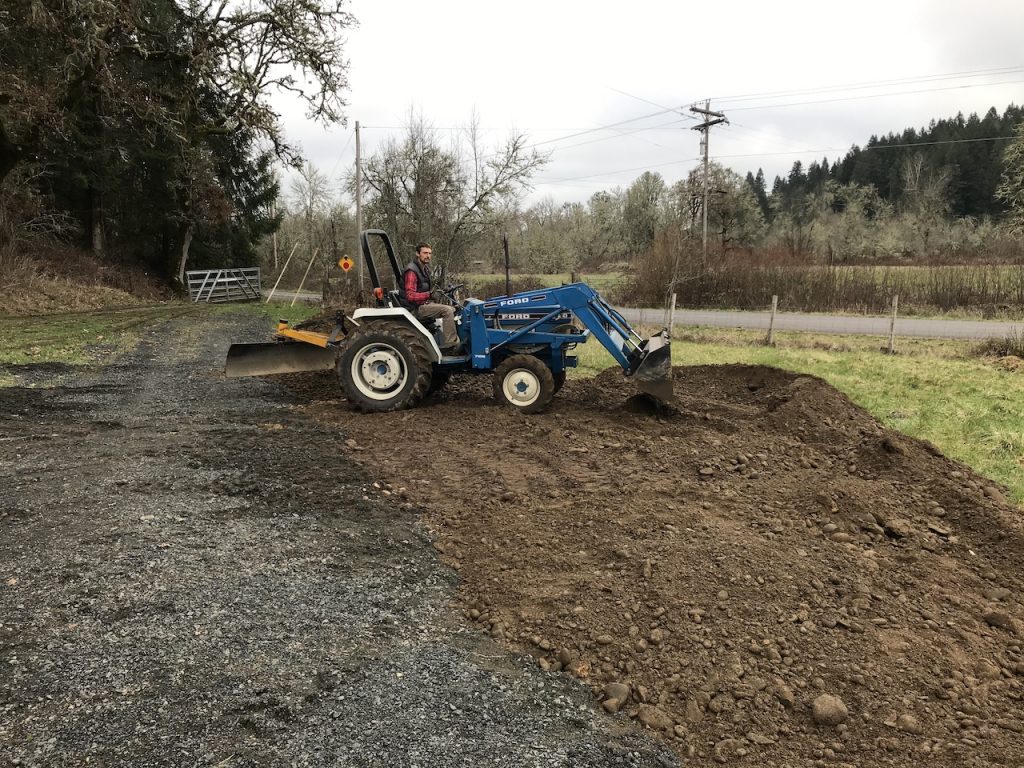

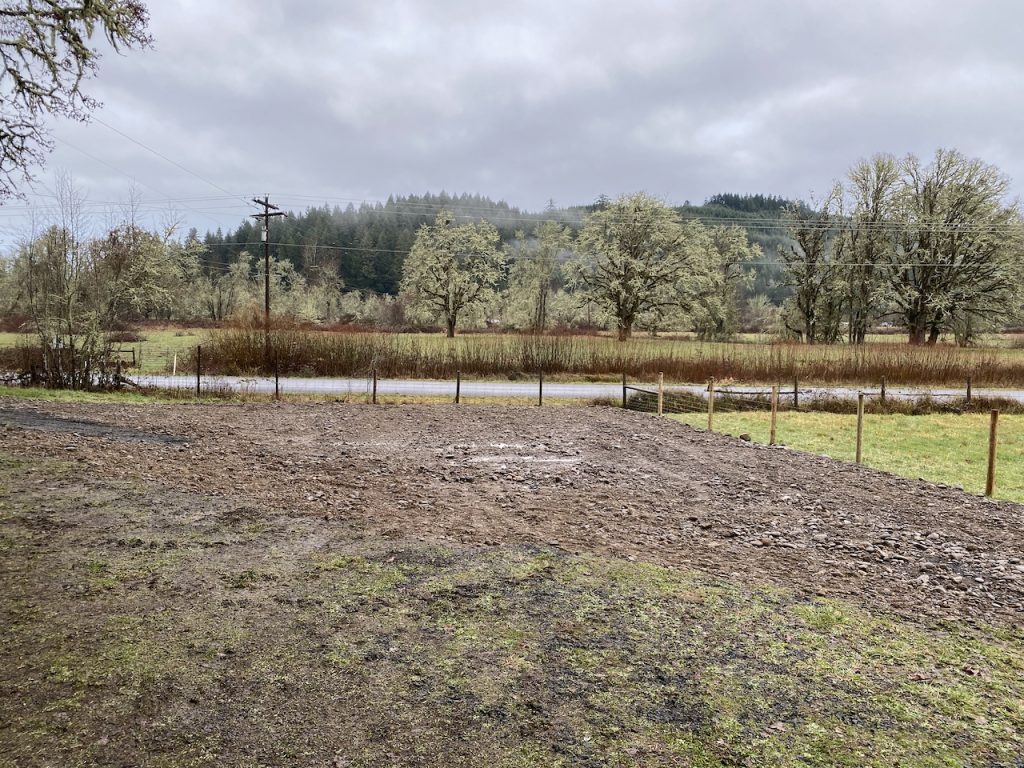
Pig Pen Mess!
Speaking of rain, in the winter rains our outdoor pig pen quickly turned into a mud hole! A really, really big mud hole that was swallowing us all up alive every time we walked on it. The piggies didn’t seem to mind but we didn’t want them to get hoof rot and thought they deserved a space that was comfortable to lay on and play without slipping and sliding about.
We debated lots of different solutions to this problem but what we ended up settling on was to buy 5 yards of “hog fuel” or “walk-on mulch”. Walk-on mulch is basically just big chunked mulch. We actually used the same stuff on the walking path we made through the woods. There were some down sides to this option: One; we knew after we had put the mulch down it meant that we wouldn’t be growing grass there anytime soon without some major work. Two; the mulch would eventually get mushed down into the mud and we would have to add more to the top to keep the desired effect. The reason why we went with it anyway was because it was a relatively cheap option and would be a comfortable and safe material for the piggies to walk and lay on.
We tractored the mulch into the outdoor pig pen and shoveled it around to create a little island of bliss leading into their indoor pig pen, the gate leading into their outdoor pen and encompassing their eating and drinking area. Since we had some extra hay, we sprinkled that too on some of the muddy mess. For this one day the pigs were in heaven with their clean hay lining the ground. Curly was especially playful doing periodic little jumps, wiggles and dashes into and out of the hay. They all even enjoyed an outdoor nap on it. Within a week it looked like a muddy mess again where the hay had been, but it was fun while it lasted. I figure it probably helped the mud situation a little after it mixed in. So far, the mulch island still stands even with the piggies occasional rooting. I’m hopeful it will last us through the rest of the winter.
One thing I would do differently if we did it again would be to bring the mulch in bucket by bucket. The wheel barrow wouldn’t have worked because the mud was so deep but bringing the tractor in REALLY made the pen muddy. The pigs root up the top soil layer looking for roots of weeds but the tractor dug up much bigger ruts due to its size.

Before 

After a week! Haha 
After
More Secure Enclosure for Animals:
We plan to get ducks sometime soon so we’ve been planning and drafting designs and setups for what this might look like. Justin and I spent many nights debating where our feathered friends would live and how they would live. We finally decided that it would be nice for the pigs and ducks to semi-share a space down by the barn. The enclosure would have a duck house and food/drinking area where the pigs could not get in yet the main living space would be shared between pigs and ducks.
I follow many of the local community networks and there are often people posting stories about their outdoor animals getting eaten by frequenting mountain lions, coyote packs and raccoons. This made us nervous for our pigs and our future ducks. A raccoon or other small to medium animal is unlikely to bother with a pig, but a duck? Mmm, dinner! Once that predator gets a taste of delicious duck we figured it would come back for more and may even be bold enough to go after the piglets. Because of this, we are in the process of creating a tall fenced structure that our pigs and ducks will be in during the winter months full time and at night or when we are away, during the summer months. The ducks will be closed inside their little hut, which is within the outer fencing, at night. The enclosure will have 8′ no-climb fencing all around which we hope will deter most predators.
Back to pole digging we went!! This time things got even messier. The ground had not only had a lot more time to take on water but we were working within an actual pig pen. And guess what? Our fence line goes right along the existing temporary T post and hog wire fence which just so happens to be the piggies poop spot. Just lovely. It went something like this: shovel poop, dig, splash, slip, shovel poop, rinse off boots, dig, splash and slip!
It seemed funny that we thought our first pole digging experience was messy!! Haha. Now our task was to dig holes for 12 fence poles, do a stacked layer of wire fencing and add 2 more gates.
Justin used our trailer to pick up 1 yard of wet gravel, fencing and 15 poles along with some other things in our van. He quickly realized that the trailer was bottomed out and had to move most of the poles and fencing into the van. Even then, when he rolled up the road and hit a small bump I could hear the tire on the trailer rubbing on the wheel well. Next time we’ll have the gravel delivered via a honkin’ dump truck.
When poor Justin was out picking up all the supplies to build this enclosure he ended up lifting something in the wrong way while his knee was bent sideways and ended up ripping his meniscus (we think)!! He heard a crunching sound and…ouch!! We got him a brace which seems to help a bit and he has been healing pretty well. So, between my hurt wrist and Justin’s hurt knee together we made for one useful human! Justin did the ramming of the digging rod to loosen the soil because that hurt my wrist and I did the lifting of dirt, gravel and poles. It poured on us one day during our last pole of the day but for the next it was sunshine. The bright side of working in the rain is that you sometimes get to see a rainbow which we did! There’s always an upside folks!
Lots of work to go on this project but we have lots of time before our ducklings come.
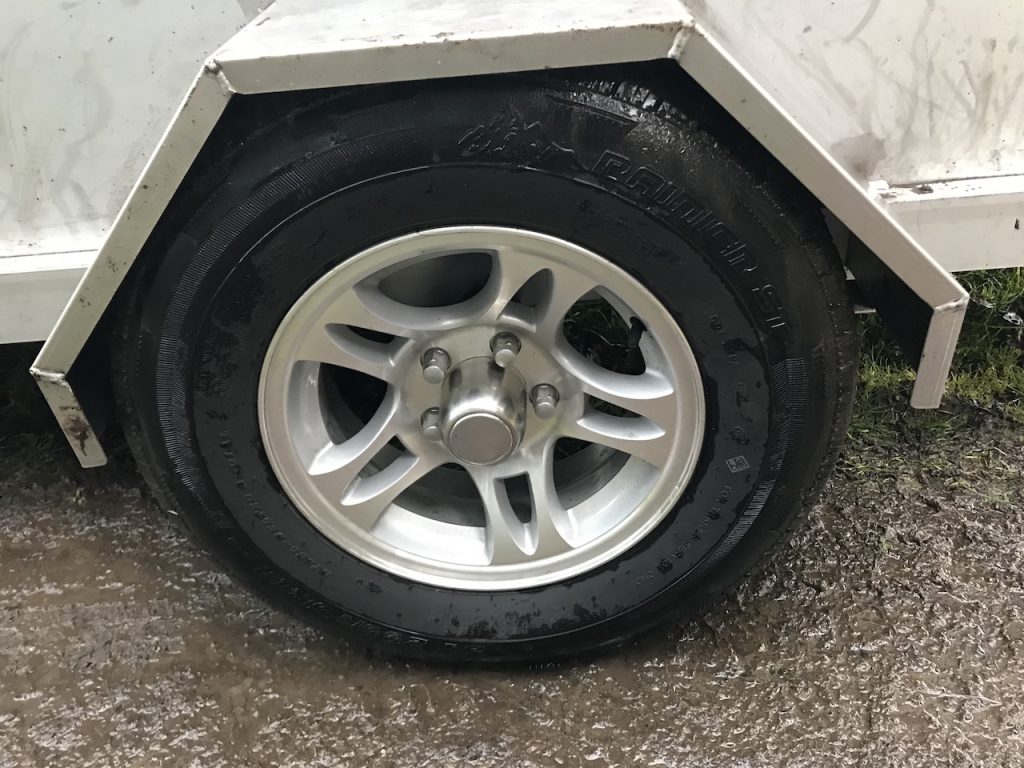
Trailer bottoming out 
Late night shoveling 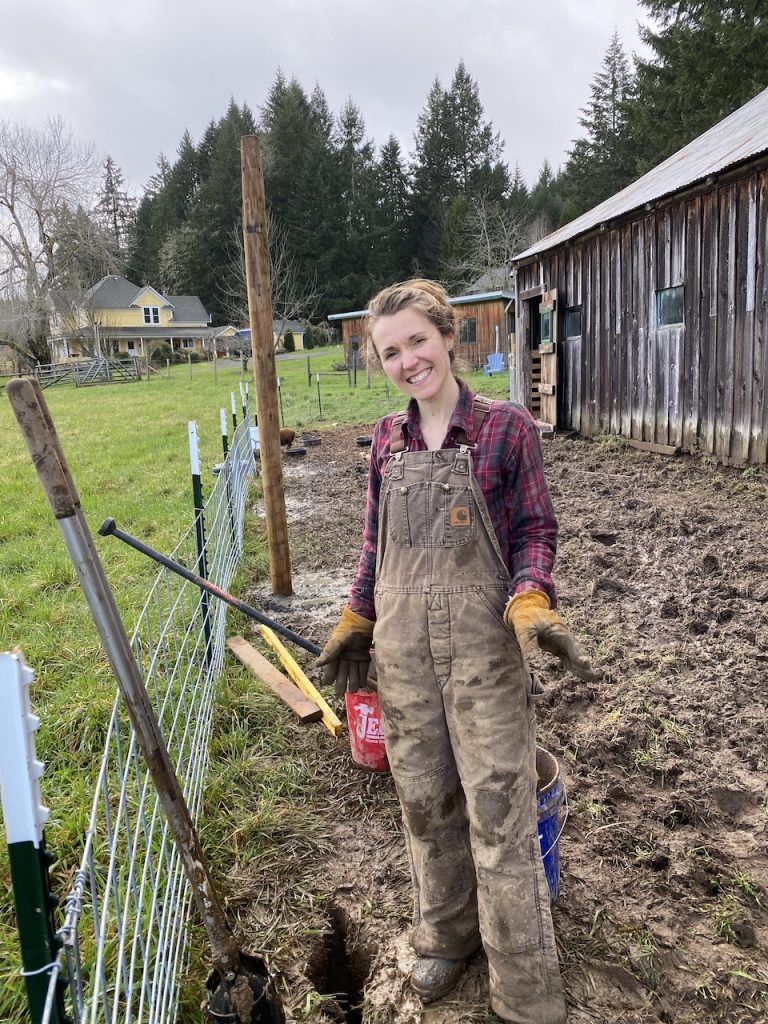
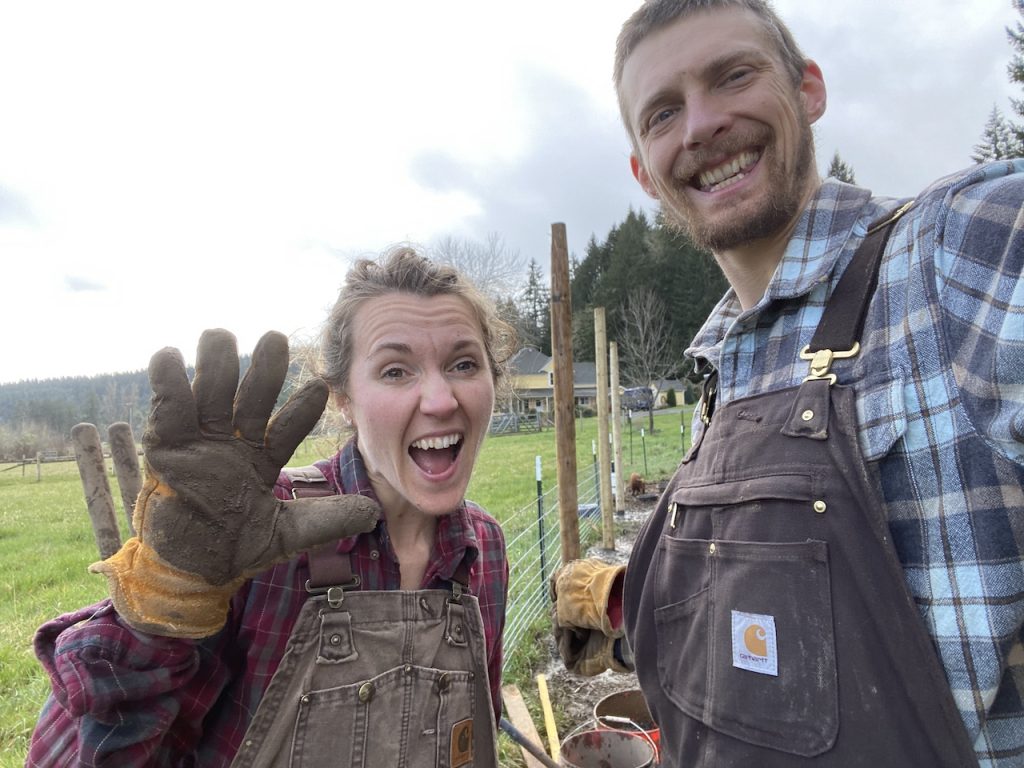
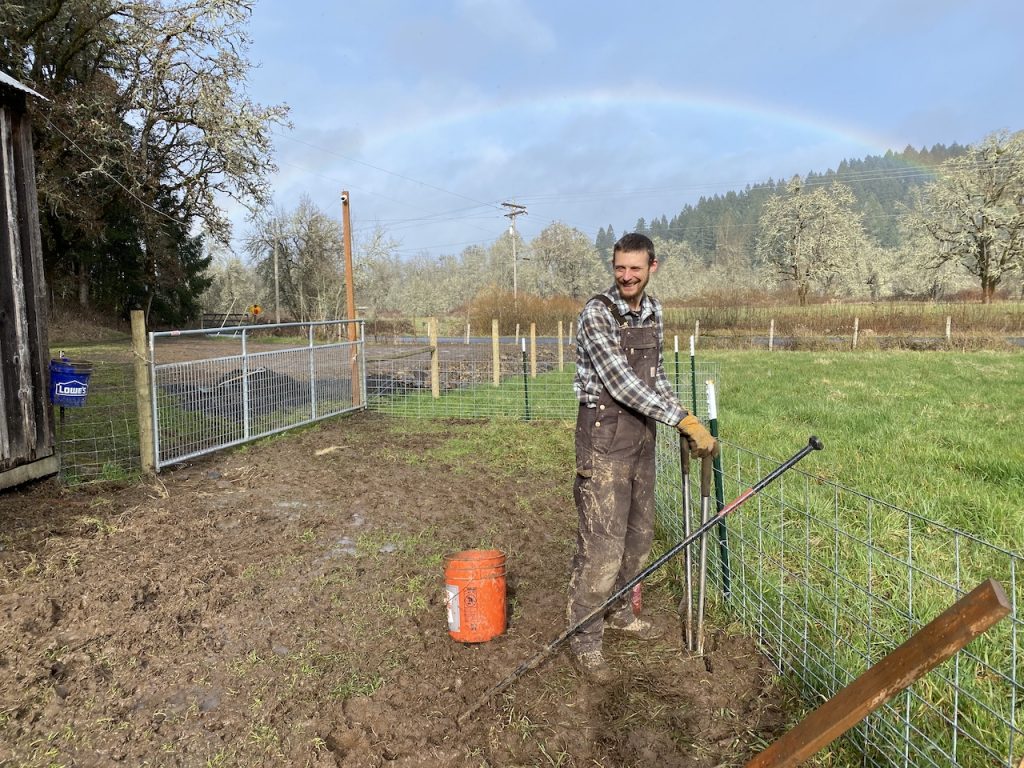
Rainbow! 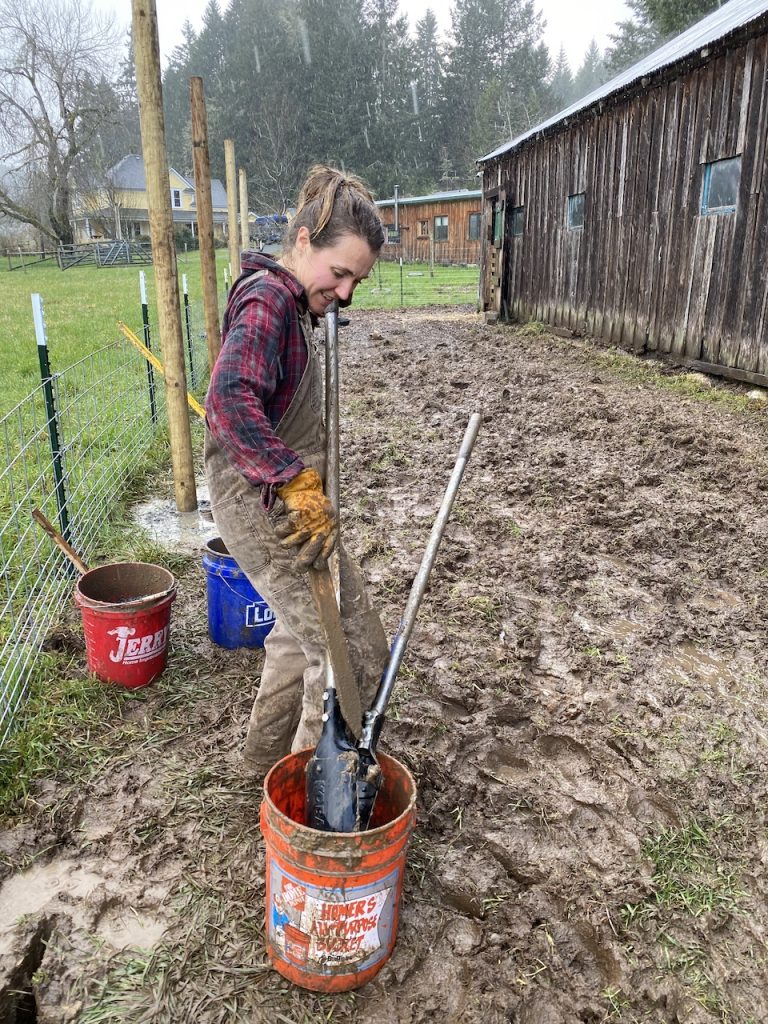
Rain!

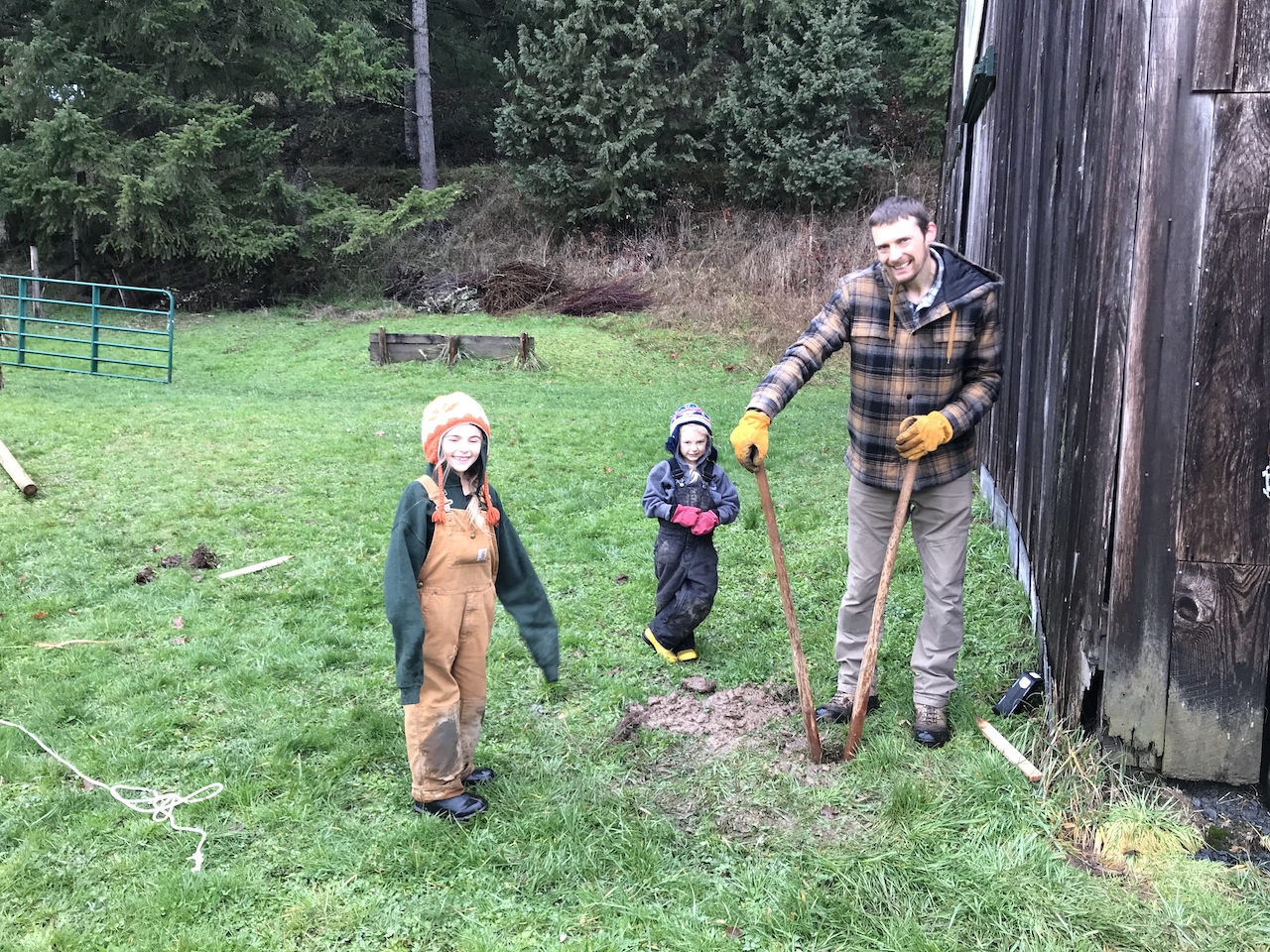
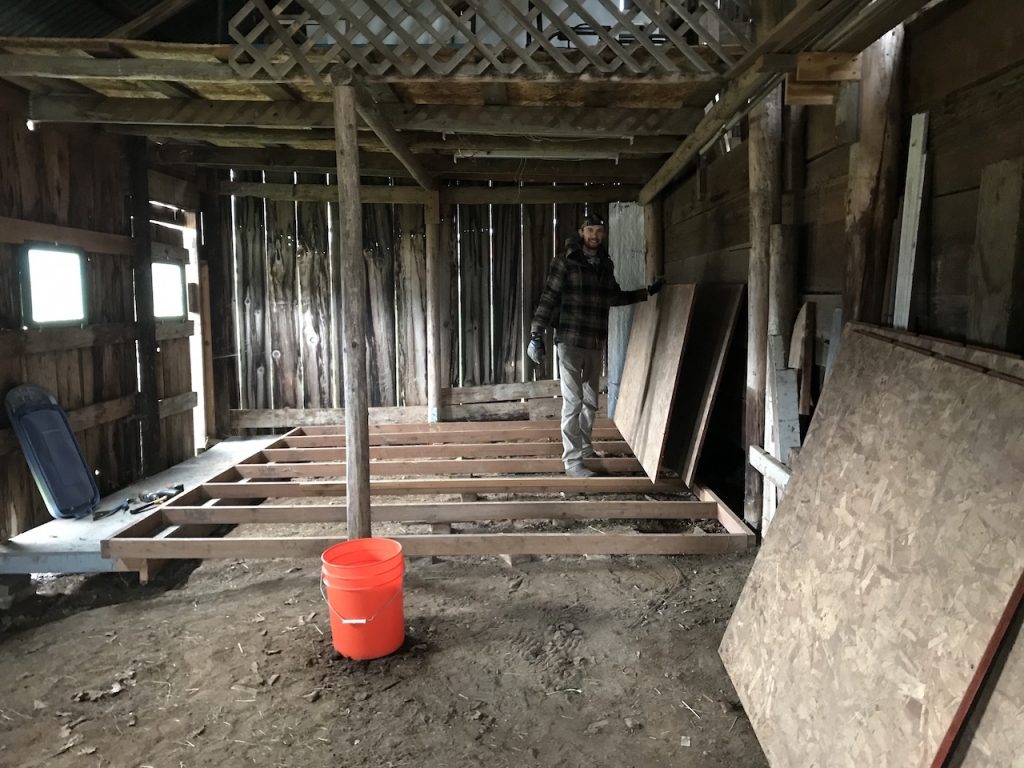
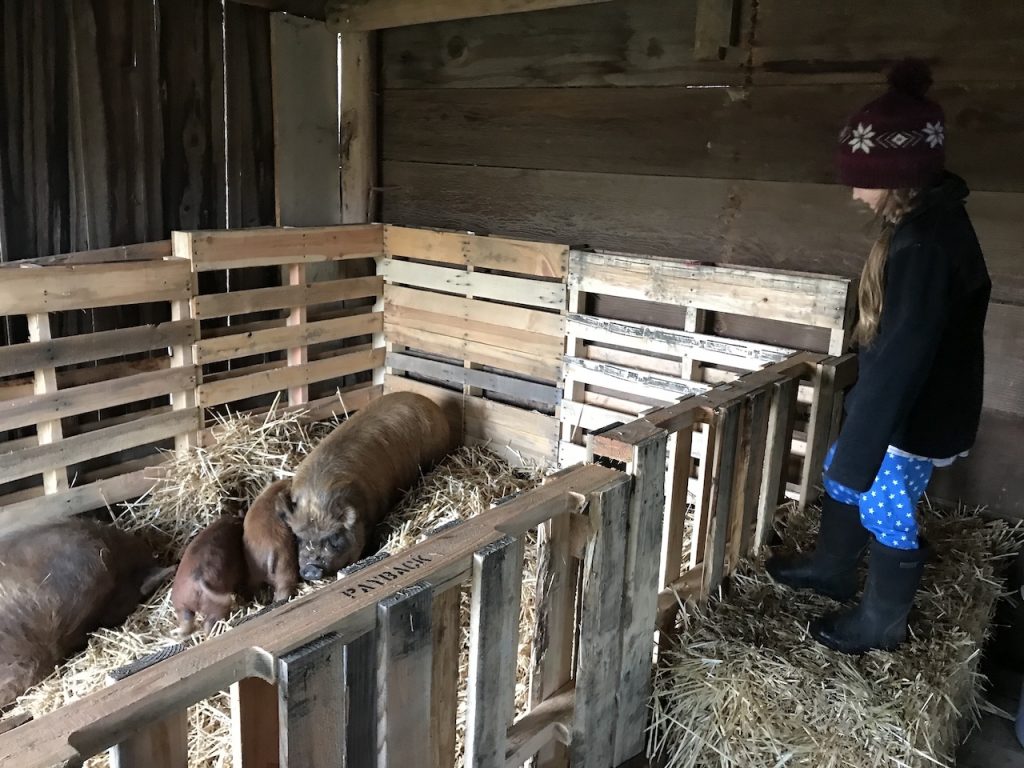

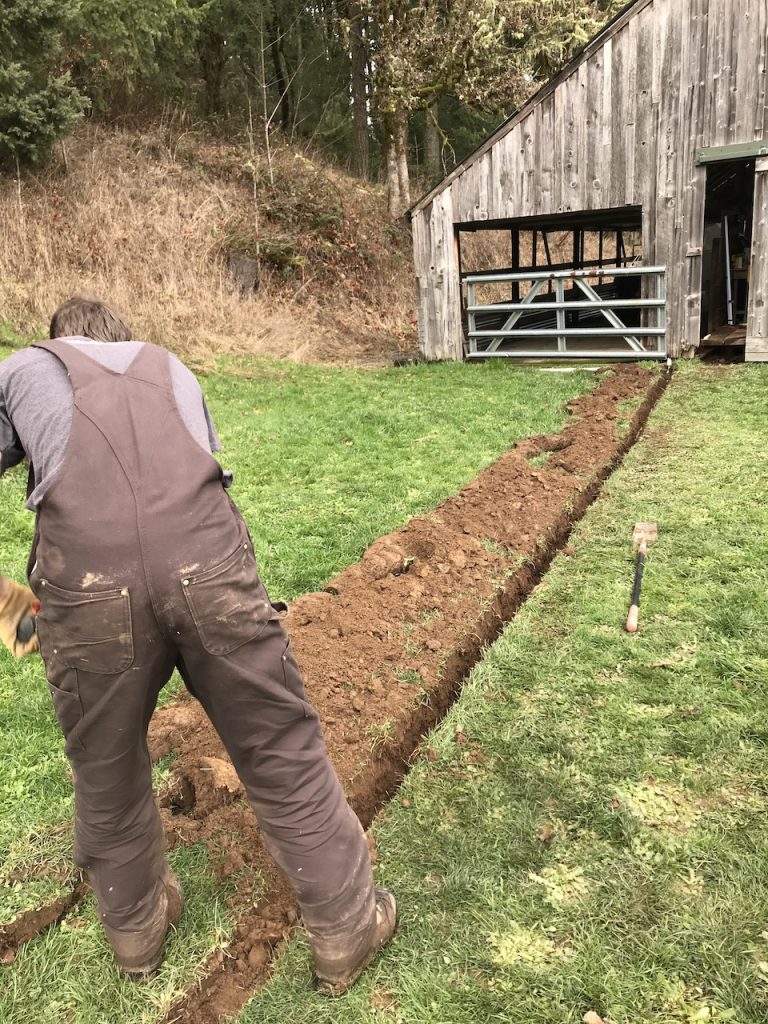


What adventures! Can’t wait to see all the improvements. Question…Where does one walk from the RV pad to the main house? Seems like the pen takes up all the space between the barn and field fence.
I learned about coyote rollers to put on top of your fence around the livestock. Google them.
Stay healthy, uninjured (any more than already done) and dry. Hugs to all!